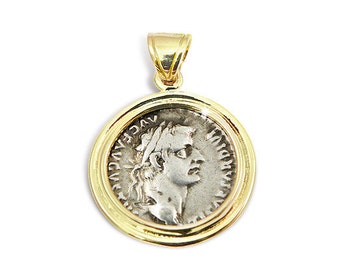Selling 1 US Dollar you get 0.584974 Denarius at 07. February 2021 11:03 AM (GMT). 71.000 PCHAIN to US Dollar 1.000 Binance Coin to UAE Dirham 1000.000 Pound. The Order of the Blackened Denarius, whose members are referred to as Denarians or Knights of the Coin,1 is an organization of fallen angels bound to thirty ancient silver coins, the denarii,Footnote 1 and seeking to bond with human hosts. The coins are said to be the silver pieces given to Judas IscariotFootnote 2 in exchange for his betrayal of Jesus.Footnote 3 Of the thirty coins, eleven.
Denarius Coin For Sale

row 2: 199 AD Caracalla, 200 AD Julia Domna, 219 AD Elagabalus, 236 AD Maximinus Thrax.
The denarius was a small silvercoin used by the Roman Empire and Roman Republic. The denarius weighed about 3 to 4.5 grams. It was the main coin of Ancient Rome. It became the most common coin produced for circulation but was slowly debased in weight and silver content. The coin was then sometimes made of copper and painted silver in color. During the Empire the front side usually had a picture of the emperor on it.
The denarius was introduced in 211 BC, and was last made in 275 AD. By then it was made of bronze.
Roman silver coins
After the initial Roman coinage based on the as and its system in bronze, the expansion of the commerce to east and and the Magna Graecia imposed the use of coins with high intrinsic value. The first step in such direction was the mintage of the didrachm, a silver coin derived by the Greek drachma.
The first silver coin derived by the Roman monetary system based on the as was the denarius, with a value equal to 10 asses and a weight of 4.5 grams (1/72 of a Roman pound). Its name comes from 'deni', meaning 'ten times', pointed out by the value mark X.
Also for the denarius, as for the as, the issue date is uncertain, but the most commonly accepted timing is during the first two Punic Wars (first 264-241 BC, 218-202 BC), to face the consistent war expenses.
In the first issues the obverse depicted the head of Rome with a winged and crested helmet, while the reverse represented the twins of the Dioscuris horseback, with the inscription 'ROMA'. In following age the subjects were linked to the aristocratic families of the moneyer as means of politic propaganda. At the end of the republican era, the images used in the silver coins were the ones of the principal personalities of the Roman public life.
An interesting evolution of the denarius at the end of the republican era was the introduction of the serrated denarii, introducing the serrated edges as anticounterfeiting measure, both to prevent the removal of metal from the edges of the coin, and to show that the inner coin was produced with the same precious metal of the two faces.
Following of the progressive decrease of the value of the as, in the 118 BC the denarius was revalued, bringing its value to 16 asses, as pointed out by the mark XVI on the of the coin; the three letters were written one above to the other, in a monogram resembling an asterisk.
Fractions of the denarius
As fractions of the denarius there were:
| Coin | Ratio with the denarius | Ratio with the as | Mark |
|---|---|---|---|
| Denarius | 1 denarius | 10 as | X |
| Quinarius | 1/2 denarius | 5 as | V |
| Sestertius | 1/4 denarius | 2,5 as | IIS or HS |
The quinarius had a value equal to 1/2 denarius or 5 asses and it was identified by the numeral V
Denarius Coin Caesar
The sestertius was equal to 1/4 of denarius or 2.5 asses, from which the name 'semis tertius'; the used mark was IIS (II =2 asses and S = 1 semisse), with the 'II' at a later stage transformed in 'H.'
See Full List On Dresdenfiles.fandom.com
To have a full picture of the Roman silver coins, it's worth to remember the circulation of the victoriatus in, parallel to the denarius. Based on the silver content of the victoriatus. (65% of 3,37 g, i.e. 2,19g of silver) in comparison to the one of the denarius (95-98% of 4,55g, i.e. 4,32 g. of silver), the intrinsic value of the denarius was double compared to victoriatus. Therefore, the victoriatus had a value equal to the one of the quinarius, but it was used mainly in areas of Greek influence, like the Magna Graecia.
Denarius Coin
The denarius remained for centuries at the base of the Roman coinage, up to its substitution by the Antoninianus as silver coin in mid III century BC. To testify the importance of this coin remains the Italian name 'denaro' for money, the use of the letter 'd' as abbreviation for the denier coined by Carlomagno and for the British penny before the 1971 decimalization. Currently the name survives in Islamic countries in coins derived by the ancient dinar gold coin.